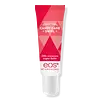What's inside
What's inside
 Key Ingredients
Key Ingredients

 Benefits
Benefits

 Concerns
Concerns

 Ingredients Side-by-side
Ingredients Side-by-side

Octyldodecanol
EmollientSynthetic Beeswax
Emulsion StabilisingBis-Diglyceryl Polyacyladipate-2
EmollientRicinus Communis Seed Oil
MaskingPetrolatum
EmollientBeeswax
Emulsion StabilisingAroma
Polyglyceryl-3 Diisostearate
EmulsifyingButyrospermum Parkii Butter
Skin ConditioningPersea Gratissima Oil
Skin ConditioningTheobroma Cacao Seed Butter
EmollientJojoba Esters
EmollientHelianthus Annuus Seed Wax
Skin ConditioningOlea Europaea Fruit Oil
MaskingAcacia Decurrens Flower Wax
EmollientStevia Rebaudiana Leaf/Stem Extract
MaskingTocopheryl Acetate
AntioxidantAscorbyl Palmitate
AntioxidantSorbitan Oleate
EmulsifyingPolyglycerin-3
HumectantPhytosterols
Skin ConditioningSilica
AbrasiveCitric Acid
BufferingOctyldodecanol, Synthetic Beeswax, Bis-Diglyceryl Polyacyladipate-2, Ricinus Communis Seed Oil, Petrolatum, Beeswax, Aroma, Polyglyceryl-3 Diisostearate, Butyrospermum Parkii Butter, Persea Gratissima Oil, Theobroma Cacao Seed Butter, Jojoba Esters, Helianthus Annuus Seed Wax, Olea Europaea Fruit Oil, Acacia Decurrens Flower Wax, Stevia Rebaudiana Leaf/Stem Extract, Tocopheryl Acetate, Ascorbyl Palmitate, Sorbitan Oleate, Polyglycerin-3, Phytosterols, Silica, Citric Acid
Hydrogenated Polyisobutene
EmollientSynthetic Fluorphlogopite
Synthetic Beeswax
Emulsion StabilisingSilica
AbrasiveEthylene/Propylene/Styrene Copolymer
Butylene/Ethylene/Styrene Copolymer
Caprylic/Capric Triglyceride
MaskingCocos Nucifera Oil
MaskingSqualane
EmollientTocopherol
AntioxidantOctyldodecanol
EmollientVanillin
MaskingCI 77891
Cosmetic ColorantPersea Gratissima Oil
Skin ConditioningHydrogenated Vegetable Oil
EmollientHelianthus Annuus Seed Oil
EmollientMentha Piperita Oil
MaskingMica
Cosmetic ColorantButyrospermum Parkii Nut Extract
EmollientCucumis Sativus Seed Oil
EmollientPentaerythrityl Tetra-Di-T-Butyl Hydroxyhydrocinnamate
AntioxidantCI 77492
Cosmetic ColorantCI 77499
Cosmetic ColorantSorbitan Oleate
EmulsifyingAlumina
AbrasiveMagnesium Oxide
AbsorbentHydrogenated Polyisobutene, Synthetic Fluorphlogopite, Synthetic Beeswax, Silica, Ethylene/Propylene/Styrene Copolymer, Butylene/Ethylene/Styrene Copolymer, Caprylic/Capric Triglyceride, Cocos Nucifera Oil, Squalane, Tocopherol, Octyldodecanol, Vanillin, CI 77891, Persea Gratissima Oil, Hydrogenated Vegetable Oil, Helianthus Annuus Seed Oil, Mentha Piperita Oil, Mica, Butyrospermum Parkii Nut Extract, Cucumis Sativus Seed Oil, Pentaerythrityl Tetra-Di-T-Butyl Hydroxyhydrocinnamate, CI 77492, CI 77499, Sorbitan Oleate, Alumina, Magnesium Oxide
 Reviews
Reviews

Ingredients Explained
These ingredients are found in both products.
Ingredients higher up in an ingredient list are typically present in a larger amount.
Octyldodecanol is a fatty alcohol. It is primarily used to enhance the texture of products.
As an emulsifier, Octyldodecanol helps prevent the oils and waters from separating. It also prevents ingredients from creating foam when shaken.
Octyldodecanol is created by reducing fatty acid to an alcohol.
Due to its high molecular weight, it does not get absorbed into the skin.
Learn more about OctyldodecanolPersea Gratissima Oil is also known as avocado oil.
Avocado Oil has antioxidant properties. It is mostly made up of the glycerides of fatty acids. About 67% of these fatty acids is made up of oleic acid. Palmitic acid and linoleic acid are also present.
These fatty acids help hydrate and soften the skin. It may increase collagen content in the skin. Collagen helps keep your skin plump and firm. This ingredient helps reduce inflammation and has not shown to clog pores.
This ingredient may not be fungal-acne safe due to its high fatty acid content.
Avocados also have B vitamins, vitamin K, vitamin C, vitamin E, and potassium.
Learn more about Persea Gratissima OilSilica, also known as silicon dioxide, is a naturally occurring mineral. It is used as a fine, spherical, and porous powder in cosmetics.
Though it has exfoliant properties, the function of silica varies depending on the product.
The unique structure of silica enhances the spreadability and adds smoothness, making it a great texture enhancer.
It is also used as an active carrier, emulsifier, and mattifier due to its ability to absorb excess oil.
In some products, tiny microneedles called spicules are made from silica or hydrolyzed sponge. When you rub them in, they lightly polish away dead skin layers and enhance the penetration of active ingredients.
Learn more about SilicaSorbitan Oleate is created from compounds in oleic acid and sorbitol.
It is used to stabilize a product by preventing ingredients from separating. Emulsifiers help keep ingredients together, such as oils and water.
According to a manufacturer, the ingredient Sorbitan Monooleate shares an INCI name with this one.
Sorbitan Oleate may not be fungal acne safe. It can also worsen oily skin.
Learn more about Sorbitan OleateSynthetic beeswax is created to be identical in structure to beeswax. It possesses the same occlusive and emulsion properties.
A blend of fatty acid esters, fatty acids, and alcohols are used to create synthetic beeswax. Whether or not this ingredient is vegan depends on the source. Sometimes, lanolin is used for its creation.
This ingredient may not be Malassezia folliculitis, or fungal-acne safe.
Learn more about Synthetic Beeswax